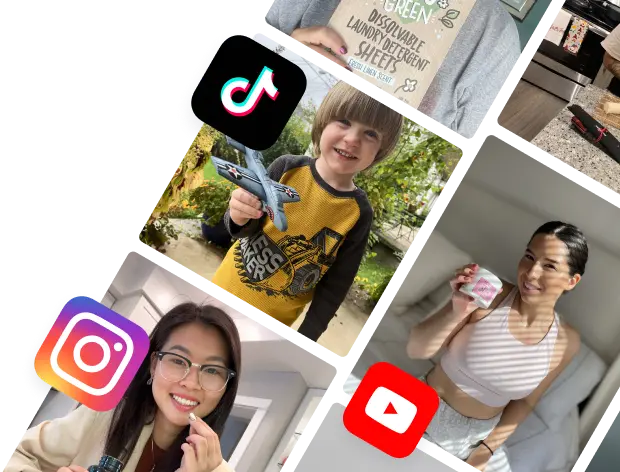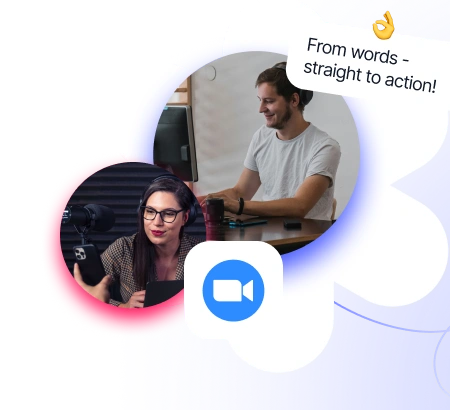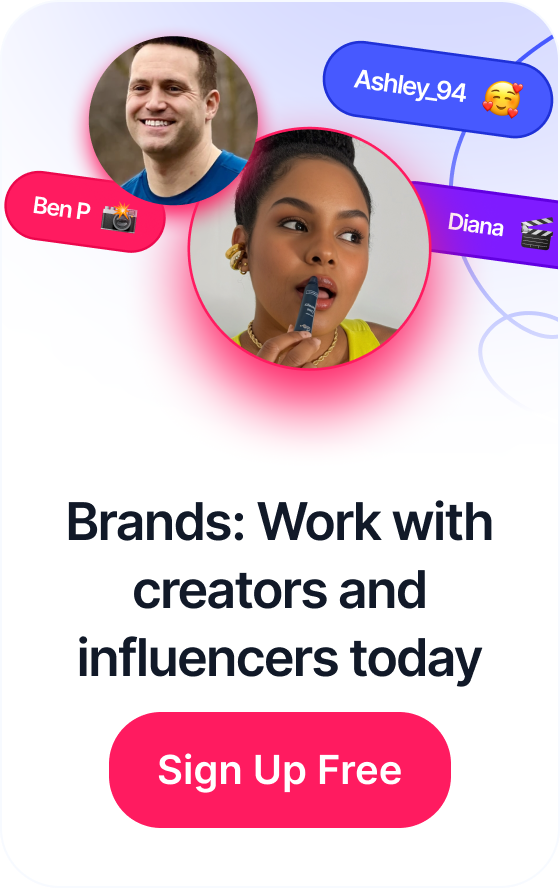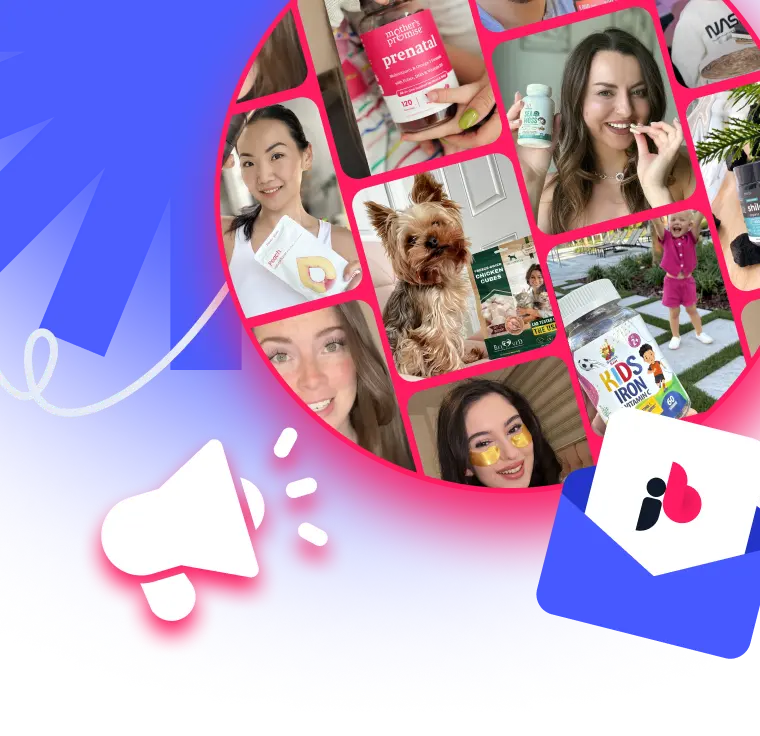 Unlocking Growth with a Network of Influencers
Unlocking Growth with a Network of Influencers
Building an AI influencer is really about fusing two key technologies: AI image generators for the visuals and large language models (LLMs) for the personality and voice. You're essentially designing a digital persona from the ground up, giving it a consistent look, and then teaching it to create on-brand content like social media posts. The end result is a digital character, built from scratch, ready to connect with an audience.
Table of Contents
Why Build an AI Influencer Now?

What once sounded like science fiction is now a practical business strategy. Brands aren't just dipping their toes in the water anymore; they're actively investing in AI influencers. Why? Because these digital personalities offer a level of control, consistency, and scale that's incredibly difficult to match with human creators. This whole shift is born from a need for more predictable and scalable marketing.
The Strategic Edge of Digital Personas
When you create an AI influencer, you have total command over its message and every single action. This completely sidesteps the risks that come with human partners—things like off-brand comments, simple errors, or even public relations scandals that can derail a campaign in an instant. Every post, comment, and collaboration aligns perfectly with your brand's DNA.
And then there's the scalability. It's a game-changer. An AI influencer can:
- Engage with a worldwide audience 24/7 without ever getting tired.
- Communicate fluently in multiple languages to crack open new markets.
- Churn out a huge volume of high-quality content with stunning efficiency.
This operational advantage is fueling some serious market growth. The virtual influencer market was valued at $6.06 billion in 2024 and is on track to explode to $45.88 billion by 2030. That kind of growth signals a massive change in how companies think about audience engagement. For a deeper dive, check out the full research about the virtual influencer market.
A New Era of Audience Engagement
Beyond just control and cost-effectiveness, AI influencers unlock entirely new creative possibilities. You can dream up a persona perfectly sculpted for a niche audience—maybe a champion for sustainable fashion or a retro-gaming guru—and build a deeply loyal community around those shared passions.
The real power isn't just in creating a digital face; it's in building a predictable, brand-safe, and infinitely scalable communication channel that resonates with a specific audience.
This precision makes for campaigns that are far more effective and measurable. Instead of just hoping a human creator's audience is the right fit, you're building the influencer for your audience. It's a strategic alignment that makes right now the perfect time to figure out what it takes to build an AI influencer for your own brand.
Building Your AI Influencer's Core Identity
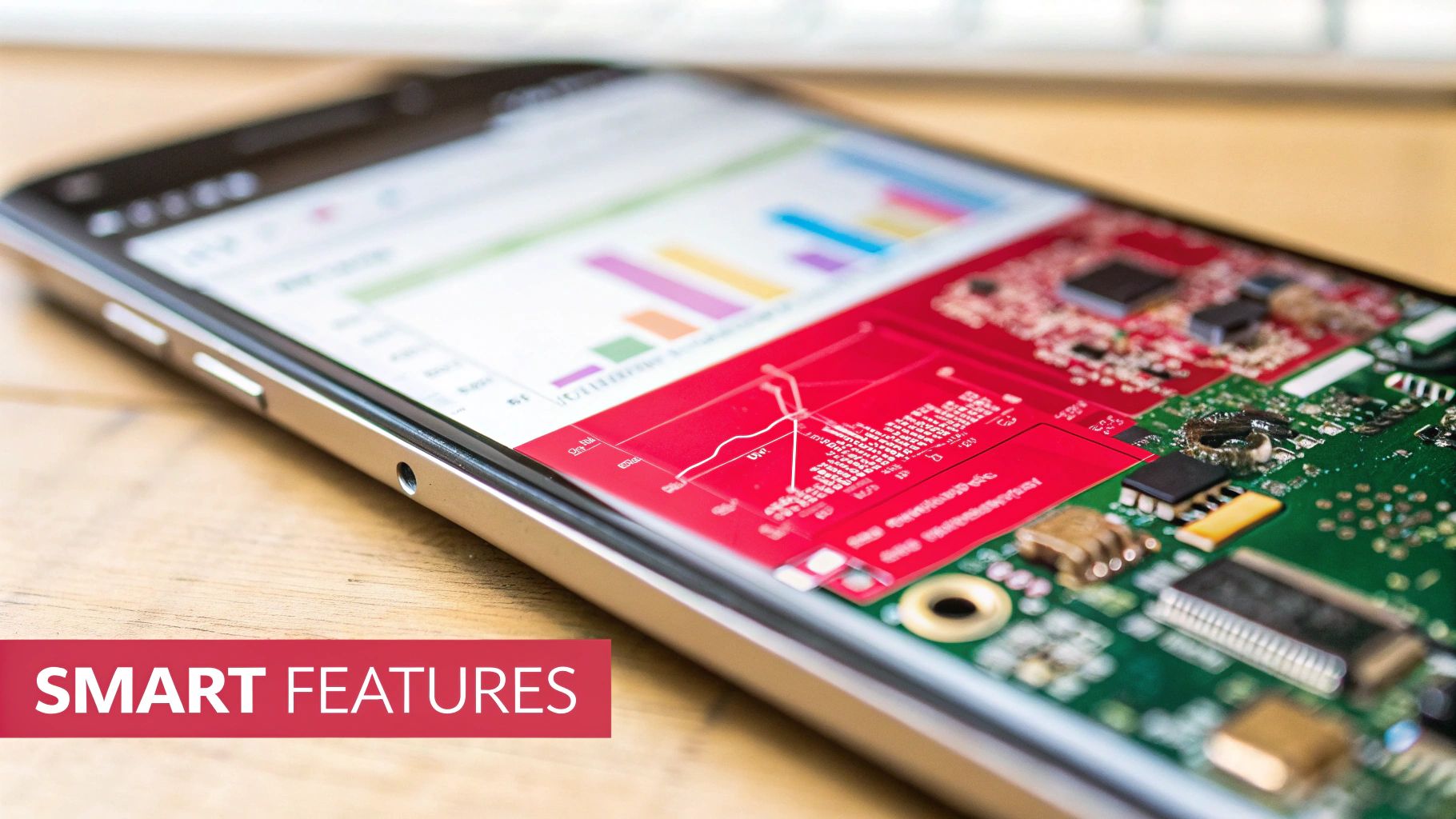
Before you even think about generating an image or writing a single line of code, you need to give your AI influencer a soul. This is the bedrock. Honestly, it’s the most critical part of the whole process because it shapes every single decision down the line—from their fashion sense to the tone they use when replying to a comment.
A strong, compelling identity is what separates a gimmick that fades in a month from a digital personality with real, lasting influence. You're not just making a generic avatar; you're building a character with depth. Who are they? What do they stand for? Why should anyone care enough to hit that follow button? Without this core, your content will feel aimless and won't build that genuine connection you need for a loyal community.
Defining Your Niche and Audience
First things first, you have to get specific with your niche. "Lifestyle" or "fashion" won't cut it—they're way too broad. You need to drill down into something tangible and focused.
Maybe your AI is a champion for zero-waste living in a dense urban jungle. Or perhaps they're a digital historian bringing ancient Rome to life through stunningly realistic scenes. A sharp niche gives your creation a clear purpose.
Think about focused concepts like these:
- Minimalist Travel: An AI who globe-trots with only a carry-on, sharing tips on sustainable and budget-friendly trips.
- Ethical Tech: A persona who breaks down complicated AI news, making it easy to understand while pushing for responsible tech.
- Retro-Futurism Art: A digital artist who creates and critiques art blending 1980s vibes with futuristic concepts.
Once you’ve nailed the niche, your target audience starts to come into sharp focus. Who are these people? What are their passions, what problems do they face, and what kind of content are they dying to see? Getting inside their heads is absolutely essential for creating an AI influencer that actually resonates.
Crafting a Compelling Backstory
Every character we remember has a story. This narrative gives context to their personality, their interests, and what drives them. It doesn't need to be some epic novel, but it must be coherent and believable within the world you've built. A good backstory answers the "why" behind your influencer's existence.
For instance, an AI focused on mental wellness could have a backstory rooted in its "programming" to understand and process human emotions, giving it a unique, data-driven view on mindfulness. This story doesn't just sit in the background; it actively informs the content and helps the audience connect on a much deeper level.
A detailed backstory is the source code for your AI's personality. It guides their opinions, their reactions, and their unique voice, making them feel less like a puppet and more like a personality.
Think about how established companies build their image. You can learn a lot from the fundamental branding strategies that create iconic, lasting connections. The same principles for building a memorable brand apply directly to building a memorable virtual person.
Establish Unwavering Core Values
Finally, you need to set some non-negotiable core values. These are the principles that guide every action your AI takes. Are they fiercely optimistic? Brutally honest? Deeply empathetic? Whatever you choose, these values must be rock-solid and consistent across every platform and every interaction.
Consistency is how you build trust. When your audience knows exactly what your AI stands for, they’re much more likely to become true, dedicated followers. This identity becomes the blueprint for everything that comes next.
Alright, let's move from the abstract to the tangible. You've mapped out your AI's identity and backstory, and now it's time to give it a face. This is the moment your concept becomes a recognizable digital person.
The goal here isn’t just to crank out one perfect picture. It’s about creating a consistent, repeatable look that people will recognize instantly, post after post. This is where you build visual brand recognition.
Your main tools for this job are AI image generators. Platforms like Midjourney, Stable Diffusion, and DALL-E 3 are incredibly good at creating photorealistic and stylized human-like images. Each has its own personality, so to speak, and the one you choose will depend on how much control you need and the artistic style you're going for.
Choosing Your Generation Tool
The platform you pick will really shape your entire creative process. For instance, Midjourney is famous for its artistic, highly stylized results. This makes it a fantastic choice for creating fashion-forward or avant-garde personas. It’s brilliant at producing beautiful, professional-looking images from relatively simple prompts.
Stable Diffusion, on the other hand, is for the control freaks among us (and I say that with respect!). Because it's open-source, you can fine-tune it with custom models (called LoRAs) that are trained on a specific face. This is how you achieve maximum visual consistency. It has a steeper learning curve, but the payoff is total control.
Then there's DALL-E 3. Since it's baked into ChatGPT, it's a natural at understanding plain English. You can give it very specific, conversational instructions, and it usually gets it right. The trade-off is that maintaining consistency across multiple images can sometimes be a struggle.
To help you decide, here’s a quick breakdown of these popular AI image generators. Each has its pros and cons, especially when your goal is to create a consistent virtual influencer.
AI Image Generator Comparison for Influencer Creation
| Platform | Best For | Consistency Control | Learning Curve |
|---|---|---|---|
| Midjourney | Highly artistic, stylized, professional-grade images. | Moderate; relies on seed numbers and detailed prompts. | Easy to moderate. |
| Stable Diffusion | Ultimate control and photorealism via custom models (LoRAs). | High; best-in-class for facial consistency. | Steep; requires technical setup. |
| DALL-E 3 | Easy-to-use, natural language prompting for specific scenes. | Low to moderate; can be challenging to replicate faces. | Easy; conversational prompting. |
Ultimately, the best tool is the one that fits your technical skills and creative vision. If you need stunning images fast, Midjourney is a great start. If you're playing the long game and need perfect consistency, it's worth learning Stable Diffusion.
The real secret to a believable AI influencer isn't just a realistic face—it's visual consistency. Your audience has to recognize your persona in every single post, whether it's a quick selfie or a high-fashion photoshoot.
This visual identity is a core part of the automated workflow you'll eventually build.
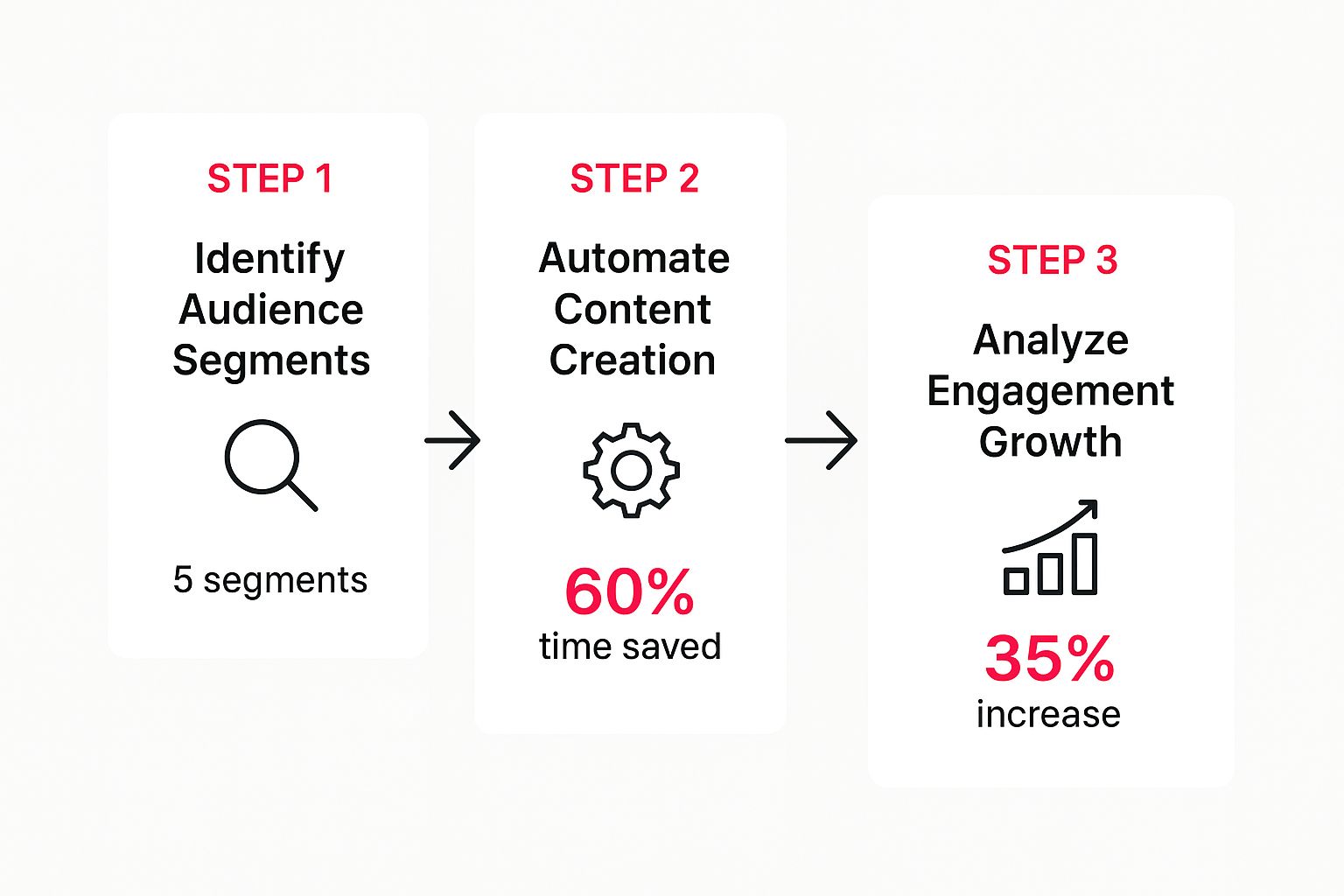
The data here shows a clear path: you start by understanding your audience, automate content creation (which saves a massive amount of time), and end up with real, measurable growth in engagement. Your AI's consistent look is central to making this whole system work.
Mastering Prompting For Consistency
No matter which tool you land on, your success all comes down to mastering prompts. The trick to a consistent look is to create a super-detailed "base prompt" that you can use over and over again. Think of this prompt as your character's visual DNA.
Your base prompt absolutely must include these elements:
- A "Seed" Character: Name a specific, consistent fictional character or even blend celebrities to get a unique facial structure. A prompt like, "a photorealistic woman who looks like a blend of Ana de Armas and Gal Gadot," works wonders.
- Detailed Facial Features: Don't just say "brown eyes." Get specific. Try "almond-shaped hazel eyes," "a light dusting of subtle freckles across the bridge of the nose," or "a sharp, defined jawline."
- Consistent Style Elements: What's their signature look? Maybe they "always have a sleek, black bob haircut" or prefer "minimalist, neutral-toned clothing from Scandinavian designers."
- Technical Specs: To really lock in the style, add camera and lighting details. Something like, "shot on a Sony A7III, 50mm f/1.8 lens, soft natural window lighting," tells the AI exactly the vibe you want.
Once you generate an initial image that you absolutely love, grab its "seed number" (a feature available in Midjourney and Stable Diffusion) and use it in your future prompts. This tells the AI to use that first image as a heavy-duty reference point, which dramatically increases the chances of creating a visually similar person in totally different scenes.
For those aiming for top-tier visual quality and even real-time interaction, you can explore tools like Unreal Engine. It's possible to deploy these advanced graphics remotely using pixel streaming, which is covered in detail in a comprehensive guide to Unreal Engine Pixel Streaming.
Building this consistent visual language is your final prep step. Once this is nailed down, your AI influencer is officially ready for their big debut.
Giving Your AI a Voice and Personality

A stunning visual gets the first click, but it's a distinct personality that builds a loyal community. This is where your AI influencer truly comes to life. Their voice, their tone, and their entire character are powered by Large Language Models (LLMs) like GPT-4 or Claude. Your job is to be the director, teaching these models to speak exactly like your persona would.
The absolute key to this is crafting a detailed persona prompt. Think of this as the master rulebook or "constitution" for your AI's personality. This isn't just about listing a few adjectives; it’s a comprehensive guide that defines every single aspect of how they communicate.
A weak, lazy prompt will get you generic, forgettable content. But a strong one? That’s how you get posts that feel authentic and perfectly on-brand, every time.
Crafting a Detailed Persona Prompt
Your persona prompt needs to be incredibly rich with detail, leaving as little as possible to the AI's imagination. You are essentially creating a character bible for the LLM to study. The goal is to define not just what they talk about, but how they talk about it.
Here are the essentials you absolutely must include:
- Tone of Voice: Is their tone witty and a bit sarcastic, or are they more warm and encouraging? Define it clearly and provide specific examples.
- Vocabulary and Slang: What specific words, phrases, or jargon do they use? What words do they never use? A retro-gaming influencer, for example, might be dropping 8-bit era slang all the time.
- Sense of Humor: Is it dry and deadpan, full of puns, self-deprecating, or do they avoid humor altogether?
- Opinions and Stances: What are their firm beliefs within their niche? An AI focused on ethical tech needs to have clear, unwavering views on data privacy.
A great persona prompt doesn't just describe a personality; it demonstrates it. I always recommend including sample social media posts, DM replies, and even video script intros that the LLM can use as a gold standard for its own output.
This detailed document becomes the central engine for all your content creation.
Putting the Persona Into Practice
With your master prompt ready, you can start building a practical workflow. You'll feed this prompt to your chosen LLM every single time you need new content.
For instance, your request might look something like this: "Using the attached persona prompt, write three engaging Instagram captions about the benefits of a digital detox." The LLM will then generate text that perfectly aligns with the voice and personality you've worked so hard to establish.
This method ensures you get remarkable consistency across all platforms, whether it's for a quick tweet or a full-length YouTube video script. It’s no surprise that this level of control and scalability is catching on fast. A recent global survey found that by January 2025, a combined 60.4% of marketers were already using AI for influencer marketing to some degree. You can discover more insights about AI adoption in marketing to see how the trend is growing.
By investing the time upfront in a strong persona prompt, you're building a reliable and scalable content machine. It’s what ensures every piece of text your AI influencer produces feels like it came from a consistent, believable character, which is exactly what strengthens that all-important bond with your audience.
You’ve done the hard work of creating a distinct look and defining a personality. Now, your AI influencer is ready for its grand debut. But launching isn't just about dropping a first picture and calling it a day. It’s about strategically introducing your new digital persona to the world and building momentum from the very first post.
This all starts with picking the right platforms—the digital spaces where your target audience already hangs out.
If your AI is a gaming guru, you absolutely need to be on Twitch and Discord. If they’re a high-fashion icon, Instagram and TikTok are your stages. The key is not to spread yourself too thin. Pick one or two core platforms that perfectly match your AI's niche and really master them before even thinking about expanding. Trust me, a smaller, highly engaged community on the right platform is infinitely more valuable than a scattered presence across every app out there.
Building a Narrative Through Content
Think of your content calendar as less of a schedule and more of a storytelling tool. A killer launch strategy always has a narrative arc. You should plan your first few weeks of content to methodically introduce your AI’s backstory, reveal their passions, and establish their core values. This is how you build a real connection that goes way beyond just pretty pictures.
To keep your audience hooked, your content mix needs to be diverse. Here’s what that could look like:
- Introduction Posts: Who are they? What’s their "origin story"? Make it compelling.
- Value-Driven Content: This is where they show their expertise. Think sustainable living tips, deep-dive tech reviews, or anything that proves their niche cred.
- Interactive Content: Get the audience involved with polls, Q&As, and "ask me anything" (AMA) sessions. Participation is key.
- Behind-the-Scenes Glimpses: Show a peek into their "digital life" or even the creation process. A little transparency goes a long way in building trust.
As you roll out content and grow your AI influencer's presence, getting product market fit validation is what will make or break your long-term success. You have to be constantly testing what resonates and what falls flat.
Using Data to Steer Your Growth
Your analytics dashboard is your new best friend. Seriously. Pay close attention to which posts are racking up the most likes, comments, and shares. This data isn't just numbers; it's direct, unfiltered feedback from your audience telling you exactly what they want more of. If you find that posts featuring your AI’s retro-futurist art get double the engagement of their "selfies," it's a no-brainer—lean into the art.
This data-driven approach is shaking up the entire industry. The impact of artificial intelligence on influencer marketing is undeniable. In fact, 2025 data shows a staggering 32.6% jump in global influencer marketing spend, hitting $32.55 billion. This massive surge is directly linked to ROI-focused strategies where brands are using AI to measure what actually works. You can dive into the full research on the latest influencer marketing spend data to see just how big this shift is.
Don’t be afraid to pivot. A successful AI influencer strategy is not static. It evolves based on analytics and community feedback. The goal is to continuously refine your approach to build a loyal, dedicated audience.
Finally, engage with your community as if you were the persona. Use that detailed prompt you created to craft thoughtful, in-character replies to comments and DMs. And don't forget to network! Consider collaborations with other creators—both human and AI—to cross-promote and tap into new audiences. It’s this consistent, authentic effort that turns that initial curiosity into a lasting, loyal following.
Got Questions About AI Influencers?
Jumping into the world of virtual personas can feel like stepping into a whole new universe. It's exciting, but it's normal to have a few questions. This space is new, and with it come unique challenges and even bigger opportunities. Let's break down some of the most common things people ask when they decide to create an AI influencer.
What Technical Skills Do I Really Need?
You'd be surprised. You don't need a degree in computer science or to be a machine learning guru. The most important skills are actually creative, not technical.
Your success really hinges on mastering prompt engineering for both images and text. Think of yourself as a creative director, not a coder.
The real core skills are:
- Brand Strategy: You need a solid vision. This means building out the core identity, values, and a compelling backstory for your AI.
- Prompt Crafting: This is where the magic happens. You have to get good at writing detailed, effective prompts for tools like Midjourney and ChatGPT to get consistent visuals and a believable personality.
- Social Media Management: All the usual rules apply. You still need to understand platform algorithms, schedule your content, and engage with the community you're building.
Getting comfortable with these tools is way more important than knowing Python. If you can clearly explain your vision to an AI, you've got the most critical skill covered.
Is Creating an AI Influencer Ethical?
This is a big one, and it all comes down to a single, critical principle: transparency. The accepted best practice—and the only sustainable path—is to be completely open with your audience that your influencer is a digital creation. You're not trying to trick people into believing a fake person is real.
Deceiving your audience is a short-term trick that can lead to long-term brand damage. The goal is to build a community around a beloved fictional character, not to fool them.
It's just another form of storytelling. We all know Mickey Mouse isn't a real person, but that doesn't stop us from connecting with the character. When you're transparent, you build trust and let your audience in on the fun.
How Do AI Influencers Actually Make Money?
AI influencers bring in revenue using the exact same playbook as human creators. The business models are already well-established and proven to work.
You'll see them making money from:
- Brand Sponsorships: Partnering with brands for dedicated posts or full-blown campaigns.
- Affiliate Marketing: Earning commissions by promoting products and services their "audience" would love.
- Selling Products: Offering everything from digital goods like art prints to physical merchandise.
- Platform Monetization: Cashing in on ad-sharing programs, like the YouTube Partner Program.
Here's a key advantage: brand safety. Because you have 100% control over what your AI says and does, brands often see these partnerships as much lower risk. This can actually make it easier to land deals.
How Do I Keep My AI Looking Consistent?
Visual consistency is everything. It's the foundation of a believable AI influencer. If your character’s face changes in every post, you'll shatter the illusion and just end up confusing your followers.
Here’s a practical game plan for keeping your AI's look on point:
- Use 'Seed' Numbers: In AI art generators like Midjourney, using the same seed number acts as a starting point, giving new images a similar composition and feel.
- Create a Character Sheet: This is non-negotiable. Develop a detailed document that outlines specific facial features, hair color and style, fashion sense, and even recurring accessories.
- Leverage Character References: This is a game-changer. Newer AI models let you upload an image to use as a "character reference" (often using a
--crefcommand). This helps lock in the facial identity across totally different scenes and outfits. - Refine Your Base Prompt: Create a detailed "base prompt" that lists all their core physical traits and reuse it constantly, tweaking only the parts that change (like location or clothing).
Mastering these techniques is what separates the amateurs from the pros. It ensures your AI persona is instantly recognizable, which is crucial for building a strong visual brand.
Ready to connect with a massive network of creators, including top AI and UGC producers? JoinBrands is the all-in-one platform that helps you find the perfect talent, manage campaigns, and accelerate your brand's growth. Streamline your entire workflow from creator matching to content approval. Start your next campaign with JoinBrands today!

